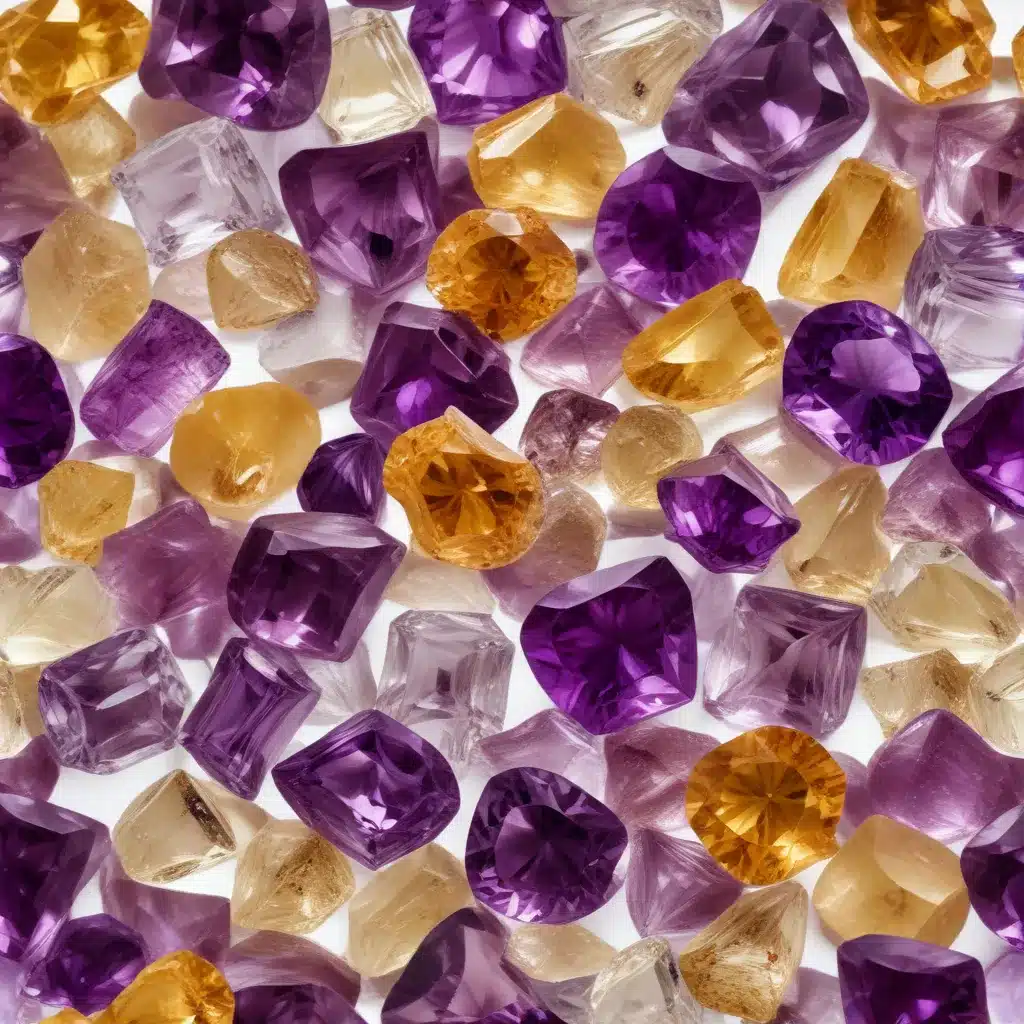
The allure of gemstones has captivated humanity for millennia. Amethyst and citrine, two distinct yet equally enchanting members of the quartz family, have long been celebrated for their striking hues and timeless elegance. In recent years, the rise of lab-grown alternatives has introduced a fascinating new chapter in the story of these captivating gems.
Crystalline Structure of Amethyst and Citrine
At the heart of amethyst and citrine lie intricate crystalline structures, formed over eons by the relentless forces of nature. Amethyst, the purple-hued quartz, owes its distinct coloration to the presence of trace amounts of iron and other impurities within its atomic framework. The iron ions in amethyst are arranged in a specific pattern, causing them to absorb certain wavelengths of light and reflect the captivating purple hues we observe.
In contrast, citrine, the golden-yellow quartz, derives its color from the oxidation of iron impurities within the crystal structure. These iron atoms, when exposed to heat, undergo a transformation that alters the way they interact with light, resulting in the warm, radiant tones that have made citrine a perennial favorite among gem enthusiasts.
The formation of these quartz crystals is a testament to the power of nature’s handiwork. Over the course of millions of years, the relentless interplay of heat, pressure, and chemical reactions deep within the Earth’s crust has given rise to these remarkable gemstones, each with its own distinct fingerprint.
Laboratory Cultivation Techniques
While nature’s masterpieces continue to captivate, the ingenuity of human science has opened up a new frontier in the world of gemstones – the creation of laboratory-grown alternatives. These synthetic gems, crafted with precision and control, mimic the natural formation process with remarkable accuracy.
One of the primary methods used to cultivate synthetic amethyst and citrine is the hydrothermal synthesis technique. In this process, engineers carefully replicate the high-temperature, high-pressure conditions found deep within the Earth’s crust. By introducing the necessary chemical precursors and subjecting them to these precisely regulated environments, they can coax the growth of quartz crystals, imbuing them with the desired color characteristics.
Another approach, known as the flux growth method, involves dissolving the necessary mineral components in a molten flux, or solvent. As the solution slowly cools, the quartz crystals begin to form, with the precise control of temperature, pressure, and chemical composition allowing for the production of gem-quality synthetic stones.
Through these meticulous techniques, scientists are able to create synthetic amethyst and citrine that are virtually indistinguishable from their natural counterparts, save for the absence of the unique inclusions and imperfections that lend natural gems their organic charm.
Chemical Composition and Properties
While the visual similarities between natural and synthetic amethyst and citrine can be striking, a closer examination of their chemical makeup and physical properties reveals some intriguing differences.
In natural amethyst, the presence of trace elements like iron and aluminum plays a crucial role in determining the gem’s color. The interplay of these impurities with the quartz crystal structure gives rise to the rich, purple hues that have made amethyst a coveted gemstone for centuries.
Synthetic amethyst, on the other hand, is typically created by introducing controlled amounts of these same impurities, ensuring a consistent and vibrant purple coloration. Similarly, the golden hues of natural citrine are the result of subtle iron oxidation, a process that can be replicated in the lab to produce visually similar stones.
Beyond color, the optical properties of synthetic and natural gems may also differ. Natural stones, with their unique internal structures and inclusions, can exhibit distinct variations in their refractive index, dispersion, and luster, which contribute to their individual charm. Synthetics, crafted in a controlled environment, often display a greater degree of consistency in these optical characteristics.
Comparison to Natural Gemstones
While lab-grown amethyst and citrine may share many physical and visual similarities with their natural counterparts, discerning the differences between the two can be a fascinating and rewarding endeavor.
One of the primary distinguishing factors lies in the presence of natural inclusions and imperfections within the crystal structure. These unique features, formed over the course of a gem’s geological journey, serve as a testament to its organic origins and contribute to its individual character. Synthetic stones, on the other hand, are typically free from such inclusions, often appearing flawless to the naked eye.
In terms of durability, both natural and lab-grown amethyst and citrine share comparable Mohs hardness levels, making them equally suitable for everyday wear and tear. However, the absence of natural defects in synthetic gems may provide a slight edge in terms of long-term resilience.
From an economic perspective, the streamlined production of lab-grown gems often results in a more affordable price point compared to their natural counterparts. This accessibility can make synthetic amethyst and citrine an attractive option for those seeking the beauty of these gems without the premium price tag.
Ultimately, the choice between natural and lab-grown amethyst and citrine comes down to personal preference, budget, and one’s values. Whether you’re drawn to the organic charm of nature’s masterpieces or the consistent brilliance of scientific creations, these captivating gems continue to captivate and inspire, inviting us to explore the wonders of the natural and the synthetic world.
For those seeking the finest quality lab-grown amethyst, citrine, and a wide range of other gemstones, we invite you to visit Shelby Gem Factory. Our commitment to excellence and innovation ensures that our synthetic offerings meet the highest standards of beauty and durability, empowering you to make informed and confident choices in your jewelry pursuits.

